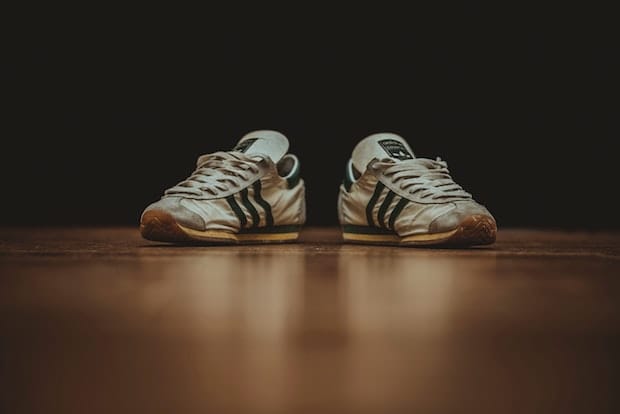Table of Contents
II. Am I at Risk for Athlete’s Foot?
III. Chronic Interdigital Athlete’s Foot
IV. Chronic Scaly Athlete’s Foot
V. Acute Vesicular Athlete’s Foot
Athlete’s Foot Overview
Athlete’s foot is a common fungal infection that affects the skin. This fungus is caused by tinea pedis and usually occurs on the feet. It is closely related to other fungal skin infections like jock itch and ringworm. Still, athlete’s foot gets its name because it is typically transmitted by your feet coming into contact with the fungus through contaminated floors, towels, or clothing.
Men and older people are more affected by athlete's foot. Still, it affects a large portion of the population. The National Center for Biotechnology Information cites that around three to 15 percent of the population is affected by this fungus. [1]
The fungus most often occurs between the little toe and the toe next to it. It causes unpleasant symptoms like reddening and cracking skin. The skin may also become flaky, itchy, and swollen over time. Because it is so common, there are several antifungal medications available to assist in treating this skin infection.
Get savings updates for Diflucan
If over-the-counter medications are not treating your athlete’s foot, you may be prescribed Spectazole (econazole), Lotriderm cream (clotrimazole/betamethasone), or Diflucan (fluconazole). Athlete’s foot can vary in location and severity, so read on to learn more about the different types of athlete’s foot. [2]
Before the types of athlete’s foot can be identified, it is essential to understand the risk factors for transmitting this fungus. Coming into direct contact with the fungus is the most common form of transmission, but several factors may increase your chances of developing this bothersome infection. They include: This type is the most common type of athlete's foot. It is sometimes referred to as a "toe web infection." Over time, it can result in scaling, fissures, and maceration. Maceration causes the skin to lighten in color and become wrinkly. It feels soft and soggy to the touch. This occurs when the skin comes into contact with moisture for too long, making it more likely to tear and rip. [3] When maceration occurs due to interdigital athlete’s foot, a fissure may occur. A fissure is a small tear in the thin, moist tissue of the affected area. In many cases, bacteria may mingle with the fungus and create a severe infection. Tight-fitting shoes that compress the toes and create a warm environment often cause this athlete’s foot. Itching and scratching symptoms become more severe when socks and shoes are removed. [4] This type of athlete’s foot is caused by a different type of fungi called Trichophyton rubrum. Scaly athlete’s foot is more common in those with eczema and asthma. If you are prone to fungal nail infections, you are at an increased risk for scaly athlete’s foot. The symptoms are slightly different and cause dry, scaling skin on the sole of the foot rather than the toes. The scaling skin is fine and silvery, with pink, tender skin underneath. Because of its appearance underneath the foot, it is also referred to as the moccasin-type of athlete’s foot. This type also transmits easily to the hands, so it is common for this rash to be present on both hands and feet. [4] This type is the least common and caused by the Trichophyton mentagrophytes fungus. Those who suffer from chronic interdigital toe web infections are more likely to get this type of athlete’s foot. Its symptoms do not cause redness and rash but a sudden onset of painful blisters on the foot's sole or top. Over time, blisters may also occur on the arms, chest, and sides of the fingers. Blisters pop up due to an allergic reaction to the fungus affecting the foot. It is also called “jungle rot” and has been known to affect servicemen who are stationed in warm and humid environments. [4] To avoid athlete's foot, you may want to keep an eye on your feet and check for unusual features periodically. Mild cases like interdigital toe web infections can be treated with several antifungal creams, sprays, or oral medications. It is essential to apply topical medications like Spectazole (econazole) or Lotriderm cream (clotrimazole/betamethasone) twice a day to ensure a speedy recovery. In more severe cases, you may require medications like Diflucan (fluconazole) or Lamisil (terbinafine). You may have to take these drugs daily for two to six months, depending on severity. It is essential to follow your doctor's directions because these medications may affect the liver. Talk to your doctor if you think you are experiencing symptoms of athlete's foot. [1] The content in this article is intended for informational purposes only. This website does not provide medical advice. In all circumstances, you should always seek the advice of your physician and/or other qualified health professionals(s) for drug, medical condition, or treatment advice. The content provided on this website is not a substitute for professional medical advice, diagnosis, or treatment.
Am I at Risk for Athlete’s Foot?
Chronic Interdigital Athlete’s Foot

Chronic Scaly Athlete’s Foot
Acute Vesicular Athlete’s Foot

Treatment
